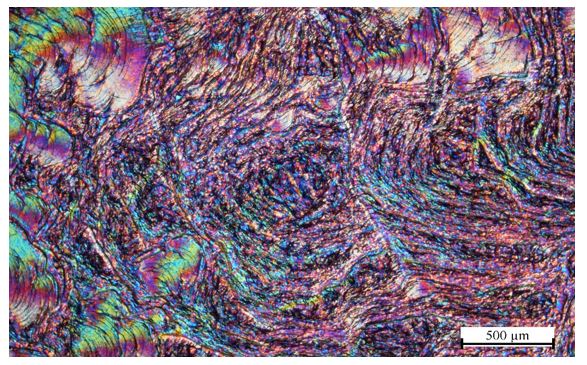Video Article Open Access
Nanoscale Considerations Responsible for Diverse Macroscopic Phase Behavior in Monosubstituted Isobutyl-POSS/Poly(ethylene oxide) Blends
Yavuz Caydamli1, Erol Yildirim2, Jialong Shen3, Xiaomeng Fang3, Melissa A. Pasquinelli4, Richard J. Spontak5, Alan E. Tonelli3
1Institute of Polymer Chemistry, University of Stuttgart, Stuttgart, 70569, Germany
2Department of Chemistry, Middle East Technical University, Ankara, 06800, Turkey
3Department of Textile Engineering, Chemistry & Science and Fiber & Polymer Science Program, North Carolina State University, Raleigh, 27695, NC-USA
4Department of Forest Biomaterials, North Carolina State University, Raleigh, 27695, NC-USA
5Departments of Chemical & Biomolecular Engineering and Materials Science & Engineering, North Carolina State University, Raleigh, 27695, NC-USA
Vid. Proc. Adv. Mater., Volume 2, Article ID 2105219 (2021)
DOI: 10.5185/vpoam.2021.05219
Publication Date (Web): 22 Jul 2022
Copyright © IAAM
Graphical Abstract

Abstract
Incorporation of polyhedral oligomeric silsesquioxane (POSS) molecules into polymer matrices presently constitutes a significant and convenient means by which to prepare hybrid organic/inorganic polymer blends possessing a wide range of interesting and useful properties. In this study1, we systematically compare the phase behavior of monofunctional isobutyl POSS molecules possessing different surface chemistry with that of non-functional octaisobutyl POSS in the presence of poly(ethylene oxide) (PEO). At some concentrations of octaisobutyl POSS, macroscopic surface features previously reported for POSS covalently bonded to different polymers are observed for the first time with non-covalently bonded POSS. Complementary calculation of interaction energies from ab initio computer simulations is utilized to elucidate the molecular-level mechanism responsible for such observations. Each of the monofunctional POSS molecules with either allyl, aminopropyl, or maleamic acid substitution exhibits distinctly different phase behavior in PEO, as discerned from both polarized light microscopy (PLM), laser-scanning confocal microscopy (LSCM), and scanning electron microscopy (SEM) conducted in both planar and cross-sectional views. As above, each of these systems is further analyzed by molecular simulations to permit quantitative comparison and explain their noticeably different behavior in PEO. To establish important structure-property relationships for these unique blends, their thermomechanical properties have been likewise measured and related to their phase behavior. A surprising result from this study is that the surface topography of the blends is largely governed by the viscosity of the POSS/PEO solution prior to casting, irrespective of the polymer molecular weight. This result opens a new and unexplored avenue by which to fabricate POSS-containing polymers with tunable phase behavior and bulk properties.
Keywords
Hybrid nanocomposites; POSS; Poly(ethylene oxide).
Acknowledgement
Y. C. is grateful for a Fulbright Graduate Fellowship, and X. F. acknowledges financial support from the China Scholarship Council. We thank Ms Melanie Ghelardini for assistance. This work was performed, in part, at the Analytical Instrumentation Facility (AIF) at North Carolina State University, which is supported by the State of North Carolina and the National Science Foundation (Award No. ECCS-1542015). The AIF is a member of the North Carolina Research Triangle Nanotechnology Network (RTNN), a site in the National Nanotechnology Coordinated Infrastructure (NNCI).
References
- Caydamli, Y.; Yildirim, E.; Shen, J.; Fang, X.; Pasquinelli, M.A.; Spontak, R.J.; Tonelli, A.E.; Soft Matter, 2017, 13, 8672.
Biography
Yavuz Caydamli is a postdoctoral fellow at the Institute of Polymer Chemistry at the University of Stuttgart and the German Institutes of Textile and Fiber Research Denkendorf, Germany. As a Fulbright scholar from Turkey, he received his Ph.D. from North Carolina State University, Fiber and Polymer Science in 2017 under the direction of Drs. Alan Tonelli and Richard Spontak. His research focused on polymer nanocomposites and fiber chemistry. In 2017, his research was awarded as “Excellence in Graduate Polymer Research" by the American Chemical Society. Also, both in 2015 and 2016, he received the Outstanding Graduate Student Teachers Award. His research continues with fiber-reinforced composite production with advanced properties.
Video Proceedings of Advanced Materials

Upcoming Congress



